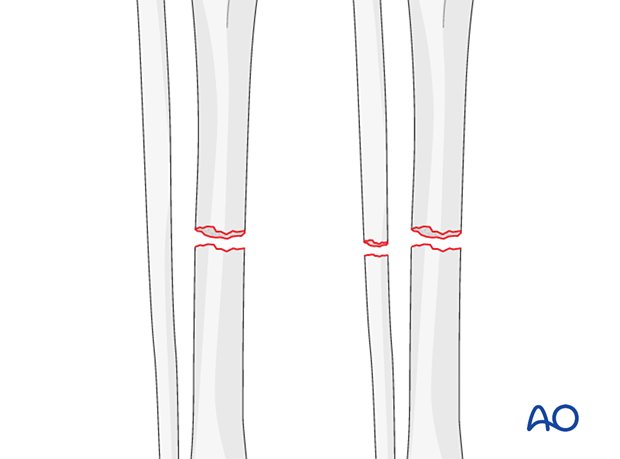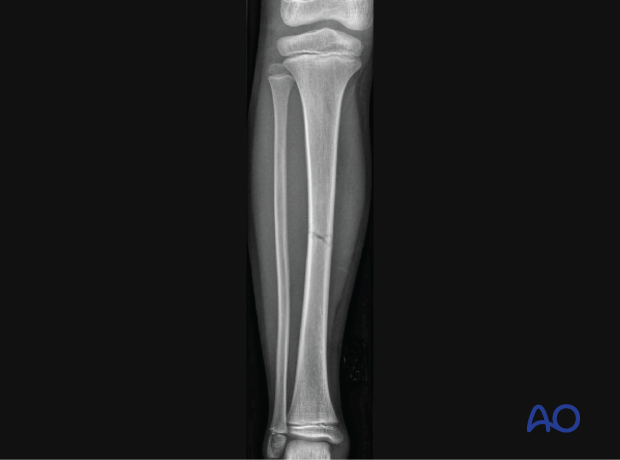42t-D/4.1 Simple transverse tibial fracture
Definition
Simple complete transverse or ≤30° oblique fractures of the tibial shaft are classified 42t-D/4.1. They may occur in the proximal, middle, or distal third of the shaft.
An accompanying fibular shaft fracture is classified separately.

Fracture stability
Differentiation between length-stable and length-unstable fractures is crucial for decision-making and choice of operative technique.
Isolated tibial shaft fractures are axially stable and do not tend to shorten under load. They are, however, associated with varus deformity due to muscle pull and buttressing effect of the intact fibula.
An associated fibular fracture decreases the overall stability.
X-ray
Isolated transverse fracture of the tibial shaft














